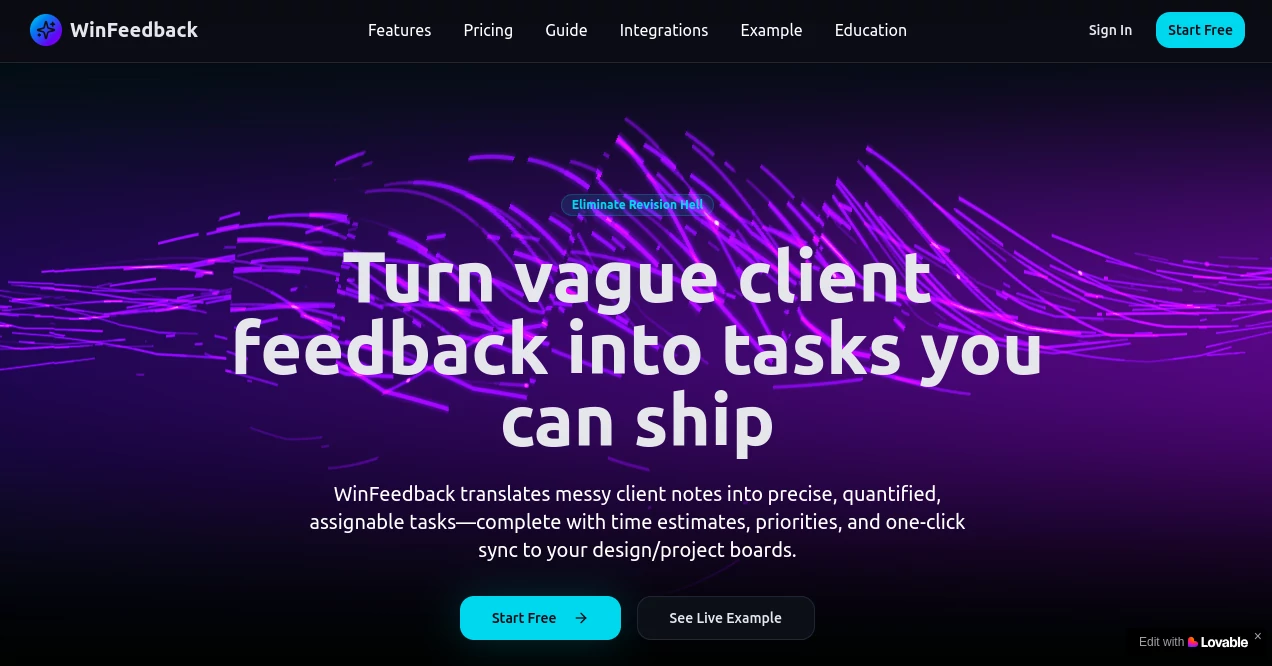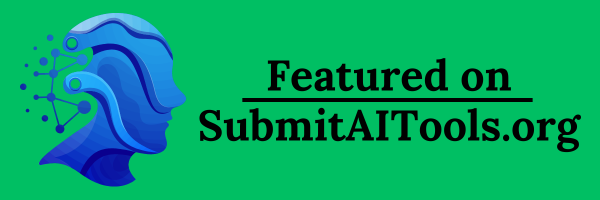WinFeedback
Turn Raw Comments into Clear Wins

What is WinFeedback?
WinFeedback slips into your workflow like a quiet coach, sifting through jumbled customer notes to pull out the gems that matter most. Picture this: a flood of emails, chats, and surveys that used to pile up like unanswered mail, now sorted into neat action items that nudge your team toward real fixes. Folks running small shops or big ops alike lean on it to keep the pulse on what users truly want, turning gripes into growth without the headache of endless reading sessions.
Introduction
WinFeedback came together a few years ago when a handful of product leads hit their limit with feedback overload—those sprawling threads that buried the good stuff under noise. They built it as a simple sorter at first, but as word got around in startup circles, it grew into a full-fledged helper that learns your voice and priorities. Now, teams from e-shops to app builders count on it to distill hundreds of inputs into a handful of moves that stick, often sharing how it sparked that one tweak that flipped complaints into cheers. It's that rare tool that feels less like work and more like having an extra set of eyes that actually sees the big picture.
Key Features
User Interface
You land on a dashboard that's all business but never stuffy, with a central feed that grabs your inputs from connected spots like email or forms without a single manual drag. Color tags light up themes as they emerge, and a sidebar lets you drill down with a click, all while keeping the screen airy enough for quick glances during coffee breaks. It's the kind of setup where even folks who dread spreadsheets find themselves poking around, drawn in by how it unfolds like a conversation rather than a report card.
Accuracy & Performance
It cuts through the fluff with a keen eye, grouping similar vibes—say, pricing beefs or feature wishes—into buckets that hit the nail nine times out of ten, based on how it tunes to your past calls. Runs zippy too, chewing on a week's worth of chatter in under a minute, so you get fresh takes without the wait that kills momentum. Users nod to moments where it flagged a brewing trend early, like a design snag that could've snowballed, proving it's not just sorting but spotting the sparks that light fires.
Capabilities
Beyond basic grouping, it spins out task cards with who-should-jump-on-what, complete with quotes that back the why, ready to ping your crew via Slack or Trello. It tracks how those actions play out, looping back to see if the chatter quiets down, and even suggests follow-ups to dig deeper on hot spots. Handles everything from one-off rants to survey waves, making it a chameleon for solo hustlers or spread-out squads chasing the same goal.
Security & Privacy
Your streams of thoughts stay wrapped tight, processed in the moment and parked only as long as you need, with easy wipes for anything sensitive. It sticks to the rules on data holds, letting you lock down views by role so only the right eyes land on the raw bits. Trust runs deep here, as teams breathe easier knowing their users' words don't wander off into the ether, all while the tool does its quiet work in the background.
Use Cases
A cafe chain funnels review blasts into fix lists for menu tweaks, spotting that spice swap before it tanks ratings. App devs route beta buzz into sprint boards, prioritizing the bugs that bite hardest. Consultants sift client notes post-meeting, turning vague nods into sharp next-steps that close deals faster. Even non-profits use it to parse donor diaries, uncovering patterns that sharpen their asks without the guesswork.
Pros and Cons
Pros:
- Turns chaos into checklists that actually get checked off.
- Learns your lingo over time, sharpening its aim without extra fuss.
- Plays nice with your daily tools, no big swaps needed.
- Surfaces the 'aha' moments that shift games, not just the obvious.
Cons:
- Shines on steady streams; spotty inputs might need a nudge to shine.
- Full team tricks hide behind the upgrade wall for lone wolves.
- Early runs can feel broad till it gets your groove.
Pricing Plans
Test the waters free with a light load of sorts each month, enough to feel the flow without commitment. Core kicks in at fifteen bucks a pop for unlimited pulls and basic shares, while teams scale to thirty for deep dives and custom alerts. Go yearly and pocket a discount, with a no-sweat trial month to roam before rooting down.
How to Use WinFeedback
Hook it to your inboxes or forms with a quick link-up, then watch it hum as new notes roll in. Skim the fresh board for themed stacks, snag a card to assign or tweak, and let it notify the doers. Circle back weekly to gauge the quieting storms, adjusting rules as your crowd's chatter evolves, turning the whole loop into a habit that hums.
Comparison with Similar Tools
Where plain sorters dump lists without the lift, WinFeedback adds the action layer that propels, though those might suit bare-bones budgets better. Against hefty analytics beasts, it keeps light and laser-focused on the feedback fix, skipping the sprawl but maybe missing macro maps. It edges for crews craving quick clarity over deep data dives, blending ease with edge where others weigh heavy.
Conclusion
WinFeedback quietly rewires the feedback loop, from frustrating fog to focused strides that build better things. It hands back time and insight, letting teams chase what counts instead of chasing tails. In a world drowning in voices, this one listens sharp and acts smarter, paving the way for products that don't just satisfy but surprise with how well they fit.
Frequently Asked Questions (FAQ)
What kinds of inputs does it handle?
Emails, forms, chats—you name it, as long as it's text that tells a tale.
How does it get smarter over time?
By watching what you flag as hits, tuning its ear to your brand's beat.
Can I integrate with my task apps?
Yep, hooks right into spots like Asana or email for seamless sends.
Is there a limit on free use?
A gentle cap to start, scaling as your needs grow.
What if the groups feel off?
Tweak the rules on the fly, or chat support for a hand in honing it.
AI Analytics Assistant , AI Customer Service Assistant , AI Task Management , AI Team Collaboration .
These classifications represent its core capabilities and areas of application. For related tools, explore the linked categories above.
WinFeedback details
This tool is no longer available; find alternatives on Alternative to WinFeedback.
Pricing
- Free
Apps
- Web Tools
















